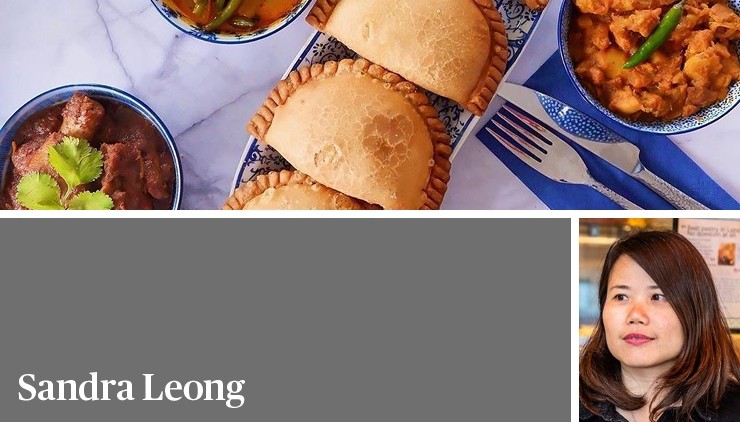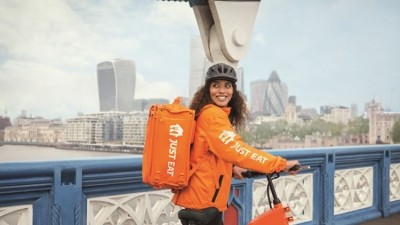comment
Pivot Pains, from a small restaurant business

The pundits haven’t quite called it yet, but the word ‘pivot’ is being touted as 2020’s Word Of The Year. Alongside other obvious contenders like ‘lockdown’, ‘pandemic’, ‘WFH’ and maybe even ‘eye test’. If you’re looking for (yet another) article about a so-and-so finding joy and rewards from changing their business up, look elsewhere.
As an owner of a small and fairly new restaurant business, I’ve come to hate the word ‘pivot’ on two levels. First, it’s just a corporate way of saying ‘change’. Like saying ‘let’s take this offline’, which really means ‘let’s talk about this later’. Second, it’s become so unbearably overused, thrown around so easily, that it ignores just how damn hard the job really is. Pivot to delivery! Flip a switch! Ta-da, you’ve rescued your business. This couldn’t be further from the truth.
We have two grab-and-go Singaporean restaurants in Central London. Without office workers, commuters, tourists, day trippers, theatre-goers and the usual hustle and bustle of the capital, we’ve either been closed, or trading at about 30% of our usual capacity since March.
At the beginning of the first lockdown, we had to do something. There wasn’t much strategy in the initial decision, or any desire to be a first ‘pivot-er’. Just sheer desperation as our business crumbled before our very eyes. We put together a menu of our signature items and launched a chilled delivery service of ready-to-heat curry puffs (think a Singaporean version of a pasty/empanada/samosa), curries and sauces. We started with London, but in October - with no sign of normality returning - decided to take it nationwide.
Why? To generate cash flow, keep our staff busy, contribute to our rent and other fixed costs, build our brand. There are thousands of restaurants up and down the country doing the same. It all looks very heroic, and without diminishing anyone’s efforts, it must be said that - for us at least - it hasn’t provided the economic salvation you might think.
Restaurants like ours are mainly built for serving guests who walk in, whether for dine-in or takeaway. They aren’t built to be like Amazon delivery, though one of our sites does look very much like a warehouse these days. We’ve even named the walls of boxes ‘The Great Wall of Howard’, after the poor guy who has to stack them every day. Thank you Howard.
‘But delivery must be so lucrative! All that pent up demand!', people say. At scale perhaps, but margins are terribly low. The cost of sending food door to door safely can be astronomical.
During the first lockdown, we thought it’d be better to use one driver - a lovely guy named Paul - in a temperature-controlled van, rather than have customers worry about who else had touched their delivery. After an initial run of deliveries, we realised this was too expensive for the volumes we were sending out. We also got complaints, as lockdown eased and people started leaving their houses, that our man-in-van wasn’t able to offer tracked deliveries. We’ve now switched to using a courier network which can, and invested in insulated packaging (again, expensive!) to keep the food in chilled conditions.
Now we get comments that the drivers aren’t as lovely as Paul. A customer who had a run-in with a courier asked us to guarantee that he would never see the offending driver again. We couldn’t do that. We’re told we use too much packaging, or that we should upgrade to eco-friendlier materials (but not raise the price). With the festive season approaching, deliveries can also be held up.
Either way, we still also get questions about why the delivery menu is more expensive or why we can’t offer free delivery. But all the associated costs mean we really don’t make that much from the orders.
Don’t get me wrong, we love our customers (don’t leave us!) but in this day and age, we’re very much spoiled by the likes of Amazon. We all want the unholy trinity of ‘cheap, fast, good’. At Old Chang Kee, we can do the ‘good’ (always!) but the other two are subject to market forces.
It took us a while to realise that we’d thrust ourselves into a world we didn’t quite understand.
Yes, food is still at the heart of it all. But now rather than take someone’s order face to face, our customers place their orders on an e-commerce platform that we hastily put together. It’s fit for purpose, but still ripe for improvement on the user experience front, so we spend a lot of time managing our customers over email and social media.
Our team has transformed into warehouse operatives armed with packing lists. We make mistakes, because like I said, we’re not built for this.
I’ve heard other restaurant owners say they don’t like how loaded the word ‘pivot’ has become, either. That if you haven’t tried to adapt and do deliveries, you’ll be judged for not moving with the times. Judgement is the last thing we need right now. Firstly, everyone knows what’s right for their own business. Secondly, the energy required is immense - and who knows whether it’s been well spent.
For balance, I must say there have been days, like when our delivery service was recently applauded by an eminent food critic, that we’ve allowed ourselves to be a little bit proud of ourselves for trying something different. But enough to be converted to the joys of pivoting? Let’s take this offline.






























